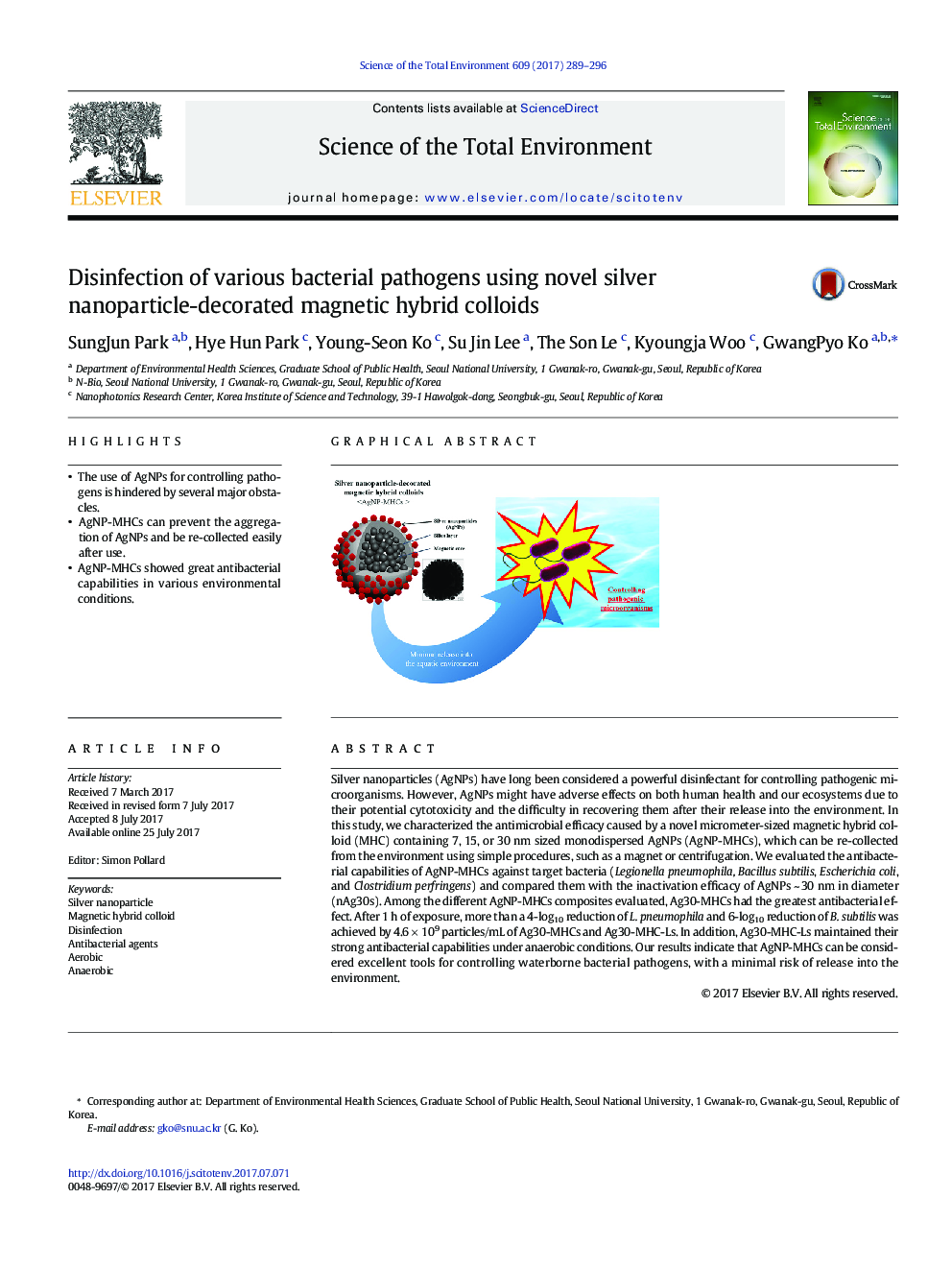| Article ID | Journal | Published Year | Pages | File Type |
|---|---|---|---|---|
| 5750754 | Science of The Total Environment | 2017 | 8 Pages |
â¢The use of AgNPs for controlling pathogens is hindered by several major obstacles.â¢AgNP-MHCs can prevent the aggregation of AgNPs and be re-collected easily after use.â¢AgNP-MHCs showed great antibacterial capabilities in various environmental conditions.
Silver nanoparticles (AgNPs) have long been considered a powerful disinfectant for controlling pathogenic microorganisms. However, AgNPs might have adverse effects on both human health and our ecosystems due to their potential cytotoxicity and the difficulty in recovering them after their release into the environment. In this study, we characterized the antimicrobial efficacy caused by a novel micrometer-sized magnetic hybrid colloid (MHC) containing 7, 15, or 30Â nm sized monodispersed AgNPs (AgNP-MHCs), which can be re-collected from the environment using simple procedures, such as a magnet or centrifugation. We evaluated the antibacterial capabilities of AgNP-MHCs against target bacteria (Legionella pneumophila, Bacillus subtilis, Escherichia coli, and Clostridium perfringens) and compared them with the inactivation efficacy of AgNPs ~Â 30Â nm in diameter (nAg30s). Among the different AgNP-MHCs composites evaluated, Ag30-MHCs had the greatest antibacterial effect. After 1Â h of exposure, more than a 4-log10 reduction of L. pneumophila and 6-log10 reduction of B. subtilis was achieved by 4.6Â ÃÂ 109Â particles/mL of Ag30-MHCs and Ag30-MHC-Ls. In addition, Ag30-MHC-Ls maintained their strong antibacterial capabilities under anaerobic conditions. Our results indicate that AgNP-MHCs can be considered excellent tools for controlling waterborne bacterial pathogens, with a minimal risk of release into the environment.
Graphical abstractDownload high-res image (288KB)Download full-size image
